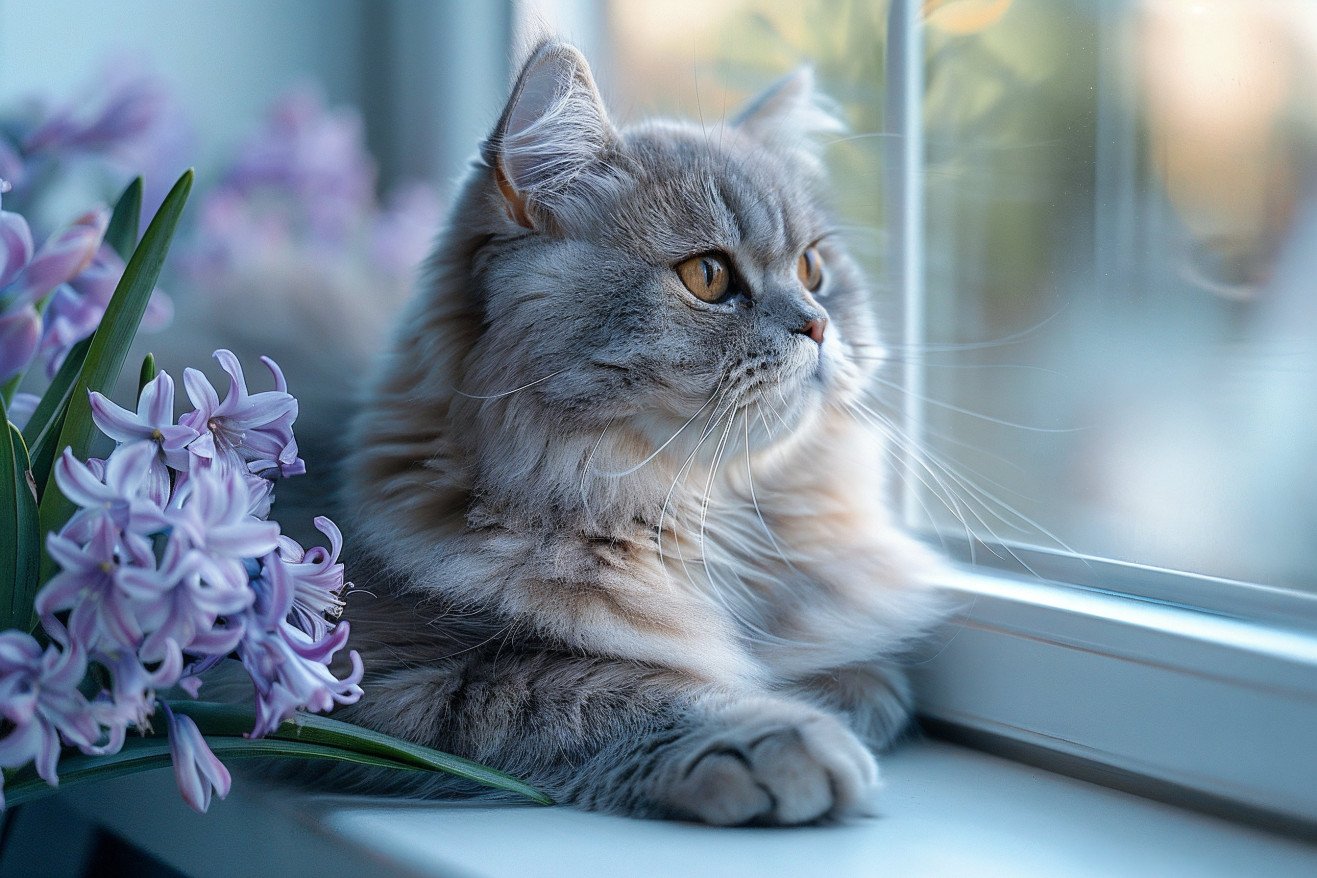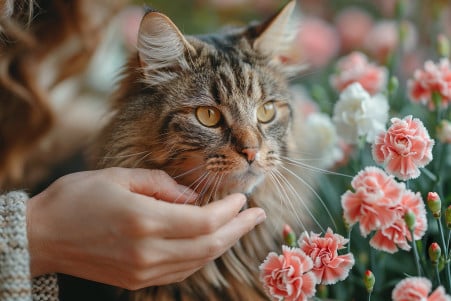Can Cats Eat Hyacinths? What Pet Parents Should Know
20 March 2024 • Updated 20 March 2024

If you’ve ever wondered whether or not it’s safe to have hyacinth flowers in your home when you have a cat, you’re right to be concerned. Hyacinths are toxic to cats. All parts of the hyacinth plant are toxic due to the presence of alkaloid compounds like narcissus pseudonarcissus. When cats eat hyacinths, they can experience symptoms ranging from vomiting and diarrhea to more serious symptoms like tremors, hypotension, and liver damage.
This article draws on extensive research from veterinary toxicology professionals and pet care organizations to help you understand exactly how dangerous it is for cats to be around hyacinths.
Through a review of case reports, clinical studies, and official alerts, you’ll also learn how to tell if your cat has been poisoned by hyacinths and what to do about it. You’ll also learn how to keep your cat safe from hyacinth poisoning. From how to recognize the symptoms of hyacinth poisoning to the best courses of action, you’ll have everything you need to make sure your cat is safe from these toxic flowers.
Are hyacinths poisonous to cats?
How to Tell If Your Cat Has Been Poisoned by Hyacinth
The symptoms of hyacinth poisoning in cats can be quite diverse, with some cats experiencing only mild symptoms and others facing life-threatening complications. According to veterinary professionals, the severity of the symptoms depends on the amount of the plant that was ingested and the specific part of the plant that the cat ate.
That said, there are some common symptoms that can indicate hyacinth poisoning. These include vomiting, diarrhea, drooling, and a lack of appetite. These symptoms are often the result of the gastrointestinal irritation that the toxic compounds in the hyacinth plant cause. As noted in a case report, even small amounts of the plant can lead to vomiting and nausea within a few hours of ingestion.
That said, more serious symptoms can develop, including an increased heart rate, difficulty breathing, lethargy, weakness, tremors, and seizures. These symptoms are especially likely if the cat has eaten the bulbs of the hyacinth plant, which have higher levels of toxic alkaloids and calcium oxalate crystals.
Because of this, it’s incredibly important for cat owners to pay close attention to their cats and take them to the vet if they show any of the symptoms listed above after coming into contact with hyacinth. The sooner the cat is treated, the better the prognosis is likely to be. That’s why it’s important for cat owners to know what to look for and to act quickly if they suspect that their cats have been poisoned.
First Aid and Emergency Response: What to Do If Your Cat Is Poisoned by Hyacinth
If you suspect that your cat has eaten any part of a hyacinth plant, it is important to act quickly to minimize the potential damage. Veterinary experts note that the first thing you should do is remove any plant material from your cat's mouth or fur, and try to identify the plant that your cat has eaten. After that, you should immediately call your vet or a pet poison control hotline and provide them with information about the plant and your cat's symptoms.
The Healthy Pet Club explains that you should then follow your vet's instructions, which may include vomiting or giving your cat activated charcoal to help absorb the toxins. However, wikiHow warns that you should never try to treat your cat at home or induce vomiting without first consulting a professional, as this can make the situation worse in some cases. It is important to make sure that your cat is treated by a vet as soon as possible.
Feline-Friendly Flora: Safe Plant Alternatives for Cat Owners
Although hyacinths are dangerous for cats, there are many non-toxic plants that cat owners can grow in their homes or gardens. The Sill notes that popular options include cat grass, peperomia, pilea, and a variety of ferns and orchids, all of which can be used to enrich a cat's environment without putting them at risk.
The Bouqs Blog also lists a number of flowering plants, including asters, celosia, roses, sunflowers, and zinnias, that are safe for cats when grown in a way that prevents cats from eating them. When choosing plants, it's important to look into their toxicity and make sure that reputable sources like the ASPCA don't list them as toxic to cats.
Offering these cat-safe plants can help cats fulfill their instinctual need to explore and chew or eat plants without the risk of poisoning. As explained by Animal Emergency Service, while these plants may not have any specific medicinal value, they can be a great way to enrich a cat's environment.
How to Avoid Plant Poisoning: Tips for Keeping Cats Away From Houseplants
Even if you only have non-toxic plants in your home, it's still important to take steps to keep your cat from chewing on or otherwise damaging your indoor greenery. The Spruce recommends a few methods for keeping cats away from houseplants, including placing plants in high or enclosed areas, using deterrents such as citrus or vinegar sprays, and covering the soil with aluminum foil.
You can also provide your cat with safe plants to chew on, such as catnip, cat grass, or wheat grass. OutdoorBengal notes that positive reinforcement and redirection can be effective ways to train cats to avoid houseplants. In addition, if your cat is eating plants, it may be a sign of an underlying issue, such as boredom, stress, or a nutritional deficiency.
Preventive Vet notes that the best ways to prevent plant poisoning in cats are to make sure plants are out of reach, use citrus-based deterrents, and provide cats with safe alternatives to plants. By taking these steps, cat owners can help ensure that their pets stay safe while still enjoying the many benefits of having houseplants.
Being a Good Plant Parent: Making Sure Your Cat Is Safe
Being a plant parent and a cat parent at the same time means that you have to be careful and responsible. Before bringing any new plants into the house, it's important to know exactly what you're getting into and how it could affect your cat. This means doing thorough research on each plant and checking out reliable resources like the ASPCA's toxic and non-toxic plant lists.
Watching your cat's behavior around plants and making sure to correct any issues that arise as soon as possible will help you avoid any potential problems.
By making sure to keep your cat's safety in mind and planning ahead, you can enjoy your plants without worrying about your cat's well-being.


